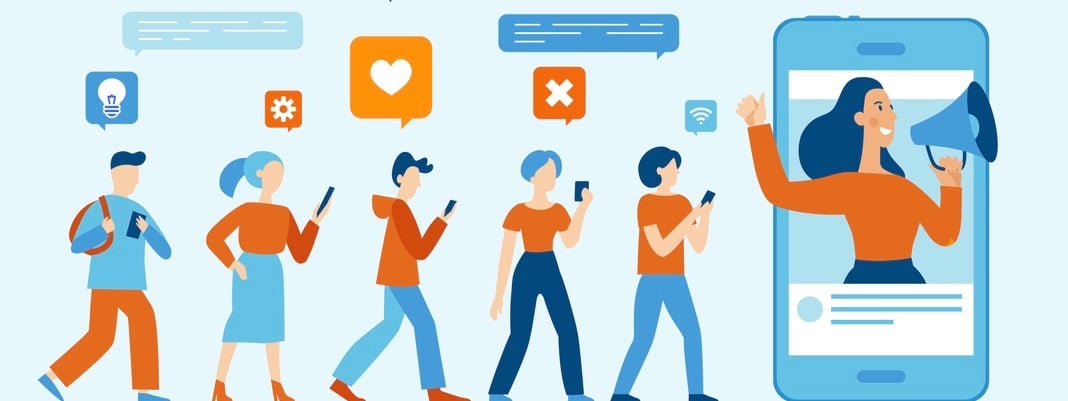When someone sees a family photo, the first thing they do is try to locate where theyare in the picture. It’s considered narcissistic behavior, but it tells us something very important—consumers want to see their reflection in whatever their brands are doing. In simple words, audiences connect with a brand that not only identifies their needs on the surface level, but is also willing to delve deeper to gain a better understanding of what appeals to them in general.
We often see brands take advantage of this consumer behavior. However, there are still quite a few brands who, despite having all the resources at their disposal, do not work hard to impress their clients. For example, take Toshiba’s HD DVD venture, which sought to rival Sony’s Blu-ray. The purpose of both products was similar—to provide consumers the ability to store and playback hours of visual content in HD mode—but one product failed to impress while the other exceeded expectations.
After a reported loss of $1 billion, Toshiba discontinued HD DVD and left Sony with those consumers. But truth be told, nobody really cared about discs that offered HD video qualities—Sony studied the audience and collaborated with movie studios that allowed Blu-ray to market HD versions of their latest films with bonus content.
The need for additional movie content was always there, and with Sony’s Blu-ray, many fans could finally see it happening. Just like that, the strategy proved itself to be a major success because Sony not only studied its audience, but went one step further by digging deeper into the needs of hardcore movie fans, allowing them to consume bonus content of their favorite movie.
This paid off because eleven years later, Sony’s Blu-ray is still going strong! If this product face-off tells us anything, it’s that brands need to put audience culture to good use by studying them in depth and modifying their marketing strategy to fit the needs of the consumers in general.
Learning about audience culture is a cunning marketing strategy in its own, and if applied right, it can do wonders. Here are three ways you can profit from it:
1. Link product usability to consumers’ lives
Think of it like this: what goes through the minds of your consumers when they use your products/services? This information could be a gold mine because once you realize how consumers utilize your products, it will become easier for you to create a marketing campaign that revolves around their needs. Doing so will breathe new life into your campaigns and will entice new consumers to do business with your brand.
Delving deeper into the relationship between your product and consumers will help you make calculated decisions that will expand your product’s reach. So, start from the basics and scrutinize your audience to figure out what truly differentiates your product in their eyes.
2. Adopt versatility to connect with audience subculture
Brands often stick with the same message and base all their campaigns around it. From one angle, this is fine since it creates brand awareness. But on the other hand, sticking with a single theme or idea could be considered exclusive, making other people feel left out.
You need versatility—a message that strengthens your brand image as being more inclusive in consumers’ minds. Consider that each person uses your products to serve a unique need. And if your brand message does not embrace them, you may end up losing customers.
Nike did a great job when it comes to the versatility by creating a marketing narrative reinforcing that their products are not limited to athletes. They crafted their campaign in a way that encouraged people to go beyond their limits to achieve greatness. This effort was quite effective since Nike’s products are often associated with active or athletic people, but the campaign messaging was designed to break down this narrative to appeal to the masses.
3. Identify your audience’s habits to grow your brand
Ordinary audience demographics often just don’t cut it. Sometimes, you need to do a little more digging to find a winning approach. So, instead of just identifying your audiences’ attitudes and values, you need to examine their habitual patterns to promote your brand to them.
Take the example of Three, a global brand that provides broadband in various countries. They learned that their customers were spending less on high-priced mobile data while abroad, and that they mainly used it for uploading holiday pictures on social media. Three tapped into this consumer’s habitual patterns and created ‘Holiday Spam.’
This campaign allowed users to utilize mobile data abroad with no additional charges and still be able to post about their adventures on social media. It worked out well because Three learned more about their consumers’ mobile usage behaviors and used this information for their own gain.
Three’s campaign showcases a very important lesson—marketers need to peel back every layer in order to understand their consumers, and this includes identifying their habits as well. For all we know, your consumers’ habits could hold the key to your marketing’s success.
The bottom line
Basic audience demographics are limited because brands need to know more that just age, gender, education and occupation of their audience—it doesn’t tell you much about their habits and behaviors. Sometimes, you need to dig deeper to understand their needs, demands, and expectations. This is where customer culture comes into the picture.
Audience culture not only puts you in a better position when it comes to identifying consumers’ needs, but it also aids marketers in creating direct marketing campaigns aimed at a diverse audience and are better equipped to help them connect with the brand.
You can also engage a digital marketing service provider, but they will only take you so far. To have maximum impact and extend your brand’s reach, you need to utilize audience culture to gain an edge.







